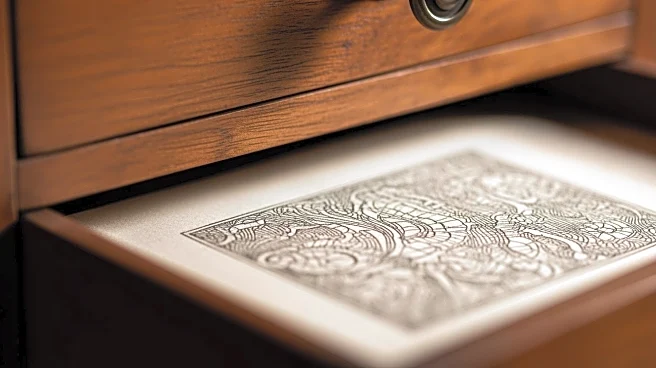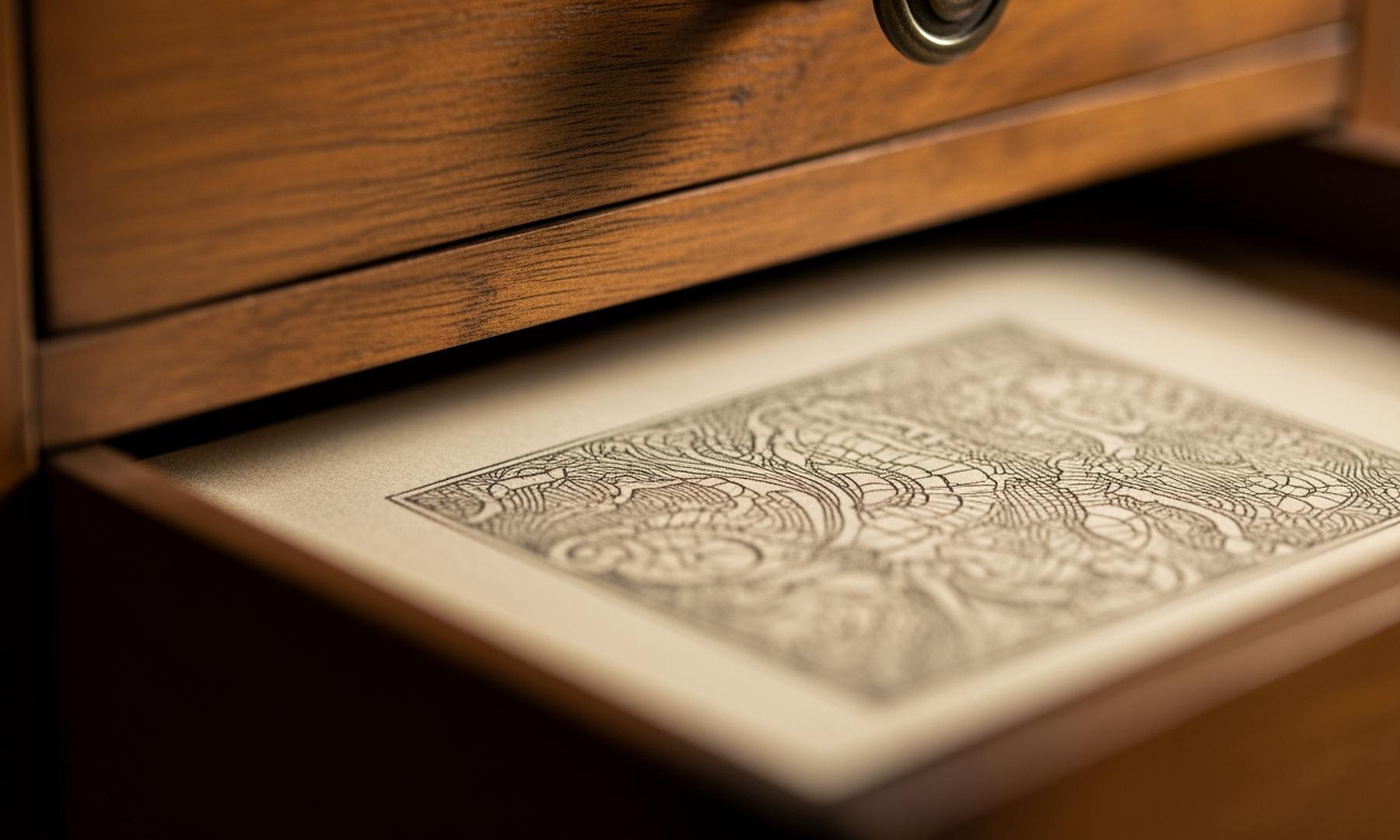What's Happening?
A rare Rembrandt print, discovered in a Victorian chest, is set to be auctioned on December 3 at Cheffins, an English auction house. The print, known as 'The Goldweigher,' was found by Edward Barlow while
sorting through his late father's studio in Norfolk. The etching depicts Jan Uytenbogaert, a chief tax collector in Amsterdam, and is expected to sell for between £10,000 and £20,000 ($13,100 and $26,200). Initially, Barlow believed the print to be of little value, but upon further examination, it was identified as an original counterproof, one of several preparatory prints made by Rembrandt. The print's reversed orientation, paper watermark, and visible chalk lines under magnification confirmed its authenticity. The discovery has reconnected Barlow with his father's admiration for Rembrandt, although he plans to sell the print and use the proceeds to purchase contemporary art.
Why It's Important?
The discovery of an original Rembrandt print is significant for the art world, as it adds to the limited collection of known works by the Dutch master. Such finds can influence the valuation of similar artworks and highlight the importance of thorough examination in art authentication. The auction of this print could attract collectors and institutions, potentially increasing interest in Rembrandt's works and boosting the market for historical art pieces. Additionally, the sale underscores the ongoing relevance of classical art in contemporary settings, as Barlow intends to invest in modern art with the proceeds. This event also illustrates the personal connections and stories behind art collections, offering insights into the historical relationships between artists and their subjects.
What's Next?
The auction at Cheffins will likely draw attention from art collectors and historians, eager to acquire a piece of Rembrandt's legacy. The sale could set a precedent for the valuation of similar preparatory prints, influencing future auctions and private sales. As Barlow plans to invest in contemporary art, the transaction may also impact the market for modern artists, potentially increasing their visibility and demand. The auction house may see increased interest in their offerings, prompting them to seek out more hidden treasures in private collections. Furthermore, the story of the print's discovery may inspire other individuals to explore their own collections for overlooked masterpieces.
Beyond the Headlines
The discovery of the Rembrandt print highlights the ethical considerations in art ownership and the responsibilities of preserving cultural heritage. It raises questions about the provenance of artworks and the importance of documenting their history. The print's journey from Amsterdam to Norfolk reflects the global movement of art and the interconnectedness of cultural histories. Additionally, the personal narrative of Barlow reconnecting with his father's legacy through art underscores the emotional value of artworks beyond their monetary worth. This event may encourage collectors to explore the stories behind their pieces, fostering a deeper appreciation for the cultural and historical significance of art.











